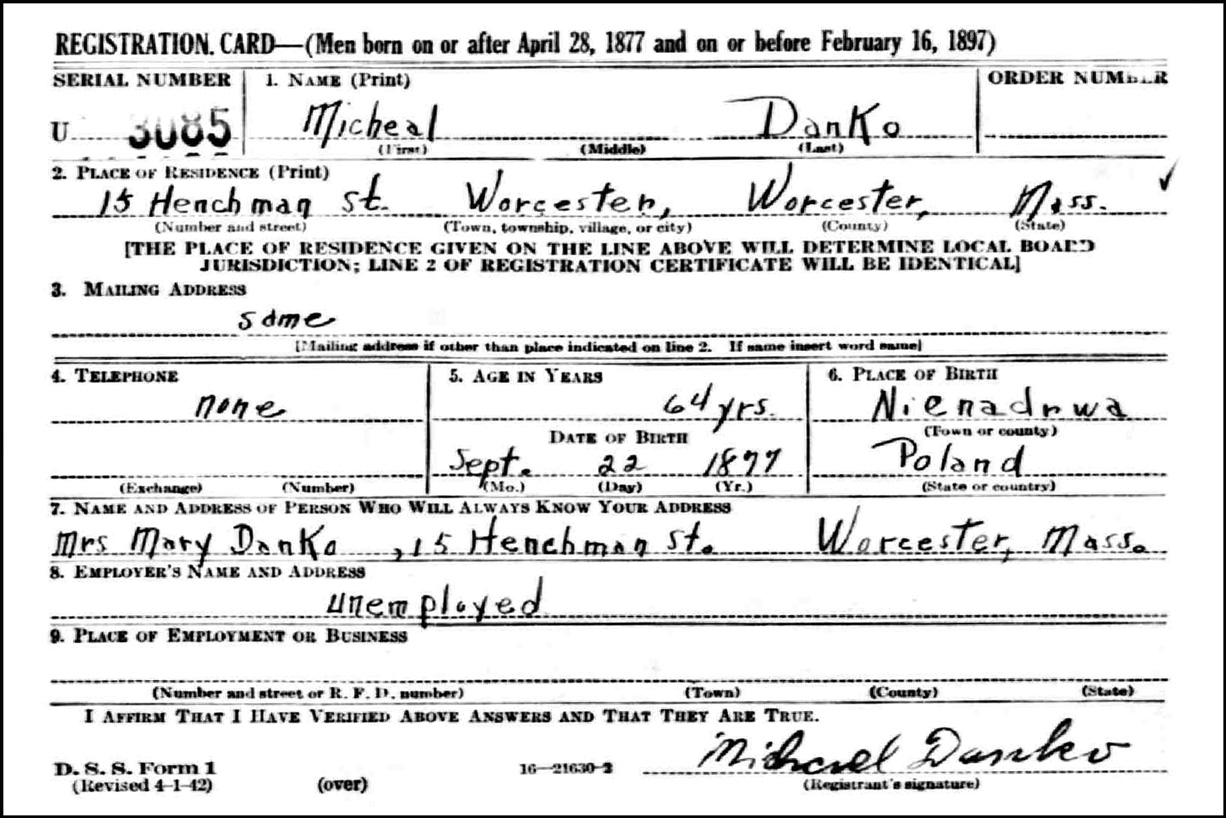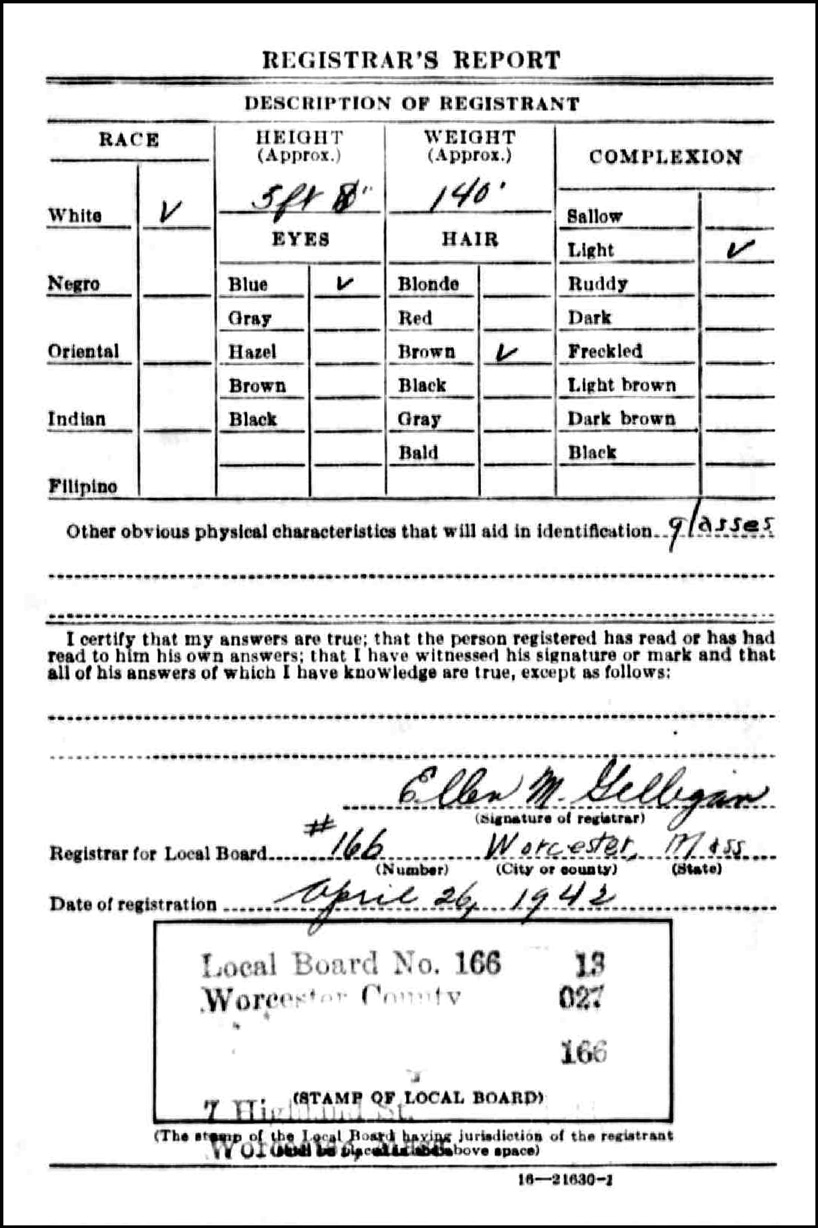My grandfather, Michael Danko, registered for the World War II draft in the fourth registration conducted in 1942.
The fourth registration, also known as the old man’s registration, was officially conducted on 27 April 1942 . All men born on or between 28 April 1877 and 16 February 1897 (between 45 and 64 years old) were required to register.
WWII Draft Registration Card – Michael Danko – Front
WWII Draft Registration Card – Michael Danko – Back
SOURCE: “U.S. World War II Draft Registration Cards, 1942,” digital images, Ancestry.com (http://www.ancestry.com : accessed 11 November 2007), Michael Danko, serial no. U3085, order no. not stated, Draft Board 166, Worcester, Worcester County, Massachusetts; citing Selective Service Registration Cards, World War II: Fourth Registration, NARA microfilm publication M2090, roll 36.
Click on the link for a PDF copy of the World War II Draft Registration Card for Michael Danko. This card provides the following information:
-
Michael Danko of 15 Henchman St. Worcester, Worcester, Mass. was registered on 26 April 1942 by Ellen M. Gilligan, Registrar for Local Board #166 Worcester, Mass.
-
His Serial Number was U3085; no Order Number was provided
-
His mailing address was the same as his place of residence
-
He had no telephone
-
He was 64 yrs old and was born on 22 Sept. 1877
-
He was born in Nienadrwa (sic) Poland
-
The person who would always know is address was Mrs Mary Danko, 15 Henchman St. Worcester, Mass.
-
He was unemployed
-
He was of the White Race; he was 5 ft 8″ tall and 140′
-
He had Blue Eyes, Brown Hair, and Light Complexion
-
He wore glasses
Although the registration was officially conducted on 27 April 1942, my grandfather registered on the 26th of April. His place of birth is listed as Nienadrwa, Poland. The name of the village is misspelled and the name of the country where he was born is technically incorrect. The correct spelling of the village is Nienadowa . Grandfather was born in 1877 in Galicia (Austria) which, in 1942, was indeed Poland.
My grandfather did not serve in World War II, but three of his four sons did. His son Michael Jr. served as a Shipfitter First Class in the US Navy, his son Joseph served as a Sergeant in the US Army, and his son Francis served as a Seaman First Class in the US Naval Armed Guard. All three sons survived the war.
Copyright © 2007 by Stephen J. Danko






Hi!
This is very interesting and I love the old papers! Very cool! 🙂
Cindy
http://www.adayinthelifeofcindy.blogspot.com
I just found your site. Do you now know that Ancestry.com scanned the draft cards incorrectly. The info on the back of the card is not your relative’s info – it belongs to the person in previous card. They’ve had over 2 yrs to correct their mistake and haven’t done it.
Hi Lori,
Steve